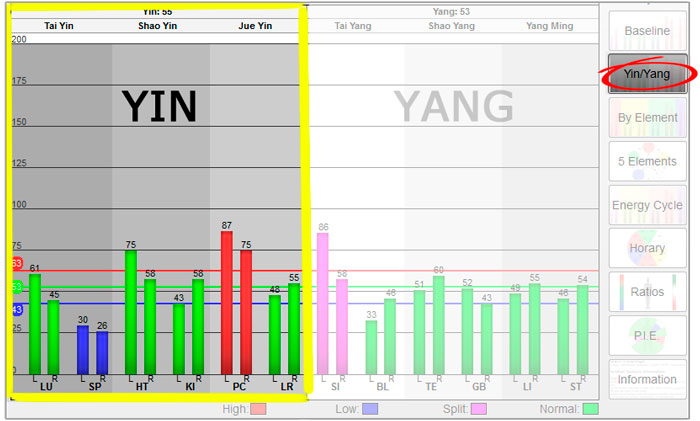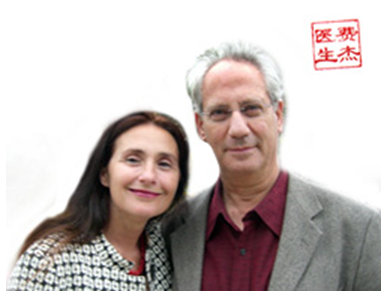This a part of a 4-series blog, if you haven’t read the first part yet, take a look at it here.
After I got home from Dr. Jake Fratkin’s seminar, I pulled Meridian Therapy off of the shelf and began devouring it from cover to cover. Stephen Brown autographed the book and wrote these words in the front cover: “Yin Leads, Yang Follows.”
The essence of the entire book is the fact that disease starts in the yin meridians. When a patient presents in your office with symptoms, this is a direct reflection of imbalances which first appeared in the yin channels.
Chinese pulse diagnosis is another example of how excess or deficiencies can be detected in the body before symptoms appear. Denmei says: “Turning one’s attention to the yin aspect, or the whole picture, is given precedence over consideration of apparent problems or symptoms, which are yang.” The real problem lies in the yin channels.
Dr. Fratkin taught me that the deficiencies in the yin channels must be addressed first—and that if you treat the imbalances that present in the yin channels—the yang channels will follow suit on their own. He made a bold statement: “If you only treat the imbalances in the yin channels, 80% of the patient’s symptoms will be alleviated.”
How does this apply to the use of AcuGraph?
After you graph a patient—Dr. Fratkin suggests that you focus your treatment on the problems that are presenting specifically in the yin channels. Then the yang channels will balance on their own. The initial goal in treatment is to find out which yin channels are weak and treat them.
Balancing the graph is easy. Simply follow the basic treatment in the AcuGraph system. If a channel is deficient—we treat the tonification point on that channel. If there is an excess in the channel, treat the sedation point on that channel. This is considered a root treatment. Shudo Denmei says that if we do not treat the root of the problem first, that the rest of the treatment will be less effective.

The graph shows a picture of what is happening in the body. Start taking a look at your graphs from a little different perspective. To the right of your screen, right under the baseline graph, click on the box that says Yin/Yang. The yin channels will be on the left. For now, just ignore the yang channels that you see on the right.
This patient has two concerns:
#1: The Spleen meridian is low/deficient
#2: The Pericardium meridian is high/excess
How would you treat this patient?
Treat the tonification point for the Spleen—which is Spleen 2.
Treat the sedation point for the Pericardium—which is Pericardium 7.
You have now balanced the energies in the meridians. My experience is that when the patient comes back the following week, the graph has begun to stabilize–and symptoms begin diminishing. Treating the imbalances in the graph is considered a root treatment and often takes care of 80% of the patient’s symptoms.
Why does it work?
Illness or injury is directly related to qi—either the quality of qi or the movement of qi throughout the body. Anytime the body is sick or injured, it is because the energy is not smoothly moving through the channels. The body knows how to heal itself. It will heal itself if the movement and quality of qi and blood is normal. AcuGraph creates a picture of where the imbalances are in the body—and a plan on how to redirect the flow of qi.
If you haven’t watched the AcuGraph demo video…what are you waiting for? Click the button to the right and take 8 minutes to catch up with what we’re talking about.
In the next post, I will share with you why Dr. Fratkin, who has been practicing for 30 years, trusts the graph, and the amazing transformation that happened in my practice when I started trusting the graph. Part 3—Trust the Graph will be coming out shortly.
If you haven’t watched the AcuGraph demo video…what are you waiting for? Click the button to the right and take 8 minutes to catch up with what we’re talking about.
Have a great week!
Kimberly Thompson, L.Ac.
Acupuncture Research Analyst
Miridia Technology Inc.




Great stuff Kimberly, keep it coming please.
Matt
Just re-read your post, Kimberly. Are you saying ONLY treat the imbalanced yin channels, or treat them first and then the yang channel points? Matt
Matt–you are quick to observe! There will be a series of 4 blog posts (possibly 5) on this subject. So, to give you a quick glimpse of what is to come… “YES–I am suggesting that by simply treating the imbalances in the yin channels, 80% of the patients symptoms will be eliminated. Why? Because the yang channels will follow suit.”
Stay tuned for more detailed information–and ponder the concept of “root treatment.”
Sorry to leave you hanging, but I promise to unfold this story further. 🙂
Kimberly
Je suis très interresse par ces renseignements qui vont m’être très utiles pour l’utilisation de mon acugraph
merci et a plus tard
When Yin is in trouble, Yang complains 🙂
I like that quote Susan! I might have to include it in a blog sometime. That is the perfect analogy of how yin and yang are intertwined.
Kimberly
Kimberly-Great post. Dr. Yennie once told me to just treat the yin deficiencies. He learned that from Dr. Manaka over 40 years ago! Remember you can only transform and move (transport) qi. That is the function of the spleen.
Great information..
This is more valuable for reducing number of needling but i have an question that if we addressing the Gall bladder meridian that is come under the shao yang, shall we treat the heart and kidney which come under the shao yin? previously i treat the both local and distal points of the same meridians which gives the great fabolous results, but this is more new news..kindly suggest your opinion. In my experience most of the time if we treat the condition of the patient as well active point that is detected by acupro machine also graph going to looking better.